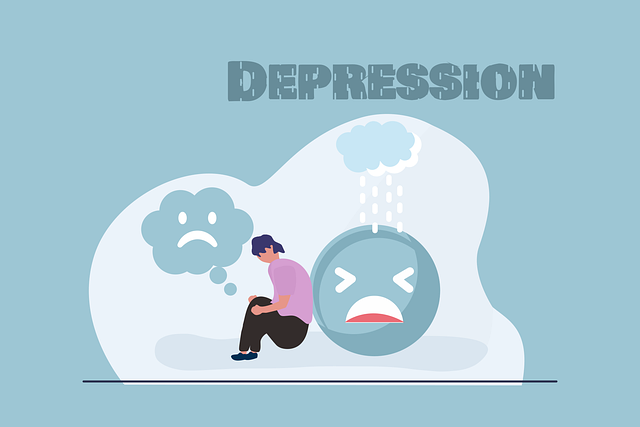Debunking Mental Illness Stigma: A Comprehensive Approach with Golden ASD Therapy
The text discusses the profound impact of stigma on individuals with Autism Spectrum Disorder (ASD)…….
In the realm of healthcare, a revolutionary approach has emerged to support individuals on the autism spectrum—Golden Autism Spectrum Disorder (ASD) Therapy. This comprehensive treatment methodology promises to transform lives by addressing the unique challenges associated with ASD, fostering growth, and enhancing overall well-being. The article delves into the intricate world of Golden ASD Therapy, exploring its principles, global impact, economic implications, technological innovations, policy landscape, and the transformative power it holds for individuals and societies worldwide. By examining these facets, we aim to provide a comprehensive understanding of this powerful therapeutic approach.
Definition: Golden ASD Therapy is an innovative, personalized treatment framework designed to support individuals with autism spectrum disorders (ASD). It goes beyond traditional therapies by offering a holistic approach that targets cognitive, social, and emotional development, tailored to each individual’s unique needs.
Core Components:
Individualized Assessment: The therapy begins with a comprehensive assessment to understand the individual’s strengths, challenges, and preferences. This involves advanced psychological testing, sensory profiling, and interviews with parents or caregivers.
Cognitive Training: A key aspect focuses on enhancing cognitive abilities through structured training programs. These programs aim to improve attention, memory, problem-solving skills, and executive functioning, enabling individuals to better manage daily tasks and social interactions.
Social Skills Development: This component employs evidence-based methods to teach and reinforce social communication, interaction, and understanding. It includes role-playing scenarios, social storytelling, and group activities designed to improve peer relationships and social integration.
Emotional Regulation and Mindfulness: Teaching emotional awareness and regulation techniques is vital. Mindfulness practices, cognitive-behavioral therapy (CBT) strategies, and relaxation exercises help individuals manage anxiety, understand their emotions, and develop effective coping mechanisms.
Sensory Integration Therapy: Recognizing the unique sensory experiences of individuals with ASD, this component employs tailored sensory integration techniques to improve tolerances and enhance participation in various activities.
Historical Context: The concept of Golden ASD Therapy evolved from decades of research and clinical practice, building upon foundational work in behavioral therapy, cognitive psychology, and developmental neuroscience. Early interventions for ASD focused on behavior modification, but the shift towards a more holistic approach has led to the development of this comprehensive therapy.
Golden ASD Therapy has captured international attention and gained prominence in various regions, driven by growing awareness, research evidence, and the compelling need for effective support for individuals with ASD.
Regional Adoption:
North America: The United States and Canada have been at the forefront of embracing this therapy, with numerous specialized centers implementing Golden ASD Therapy models. Research institutions like the University of California, Los Angeles (UCLA) and the Toronto Autism Center have contributed significantly to its development and dissemination.
Europe: Countries across Europe have shown a strong interest in Golden ASD Therapy. The UK’s National Health Service (NHS) has integrated this approach into its autism care guidelines, while Germany and France have seen an increase in private clinics offering specialized therapy programs.
Asia: In Asia, countries like Japan and South Korea are actively exploring Golden ASD Therapy. Cultural adaptations of the therapy are being developed to suit local needs and contexts, reflecting a growing recognition of its potential benefits.
Key Trends:
Early Intervention: There is a global trend towards early identification and intervention for ASD, with many countries implementing universal screening programs. Golden ASD Therapy is well-positioned to play a pivotal role in these initiatives due to its ability to support individuals from young ages.
Personalized Medicine: The shift towards personalized therapy is evident worldwide, driven by advances in technology and an understanding of the unique neurodiversity of each individual with ASD. Golden ASD Therapy aligns perfectly with this trend by offering highly individualized care.
Community Integration: Increasingly, societies are focusing on promoting community inclusion for individuals with ASD. Golden ASD Therapy encourages social participation and skill development tailored to real-life settings, contributing to a more inclusive society.
The economic implications of Golden ASD Therapy are multifaceted, influencing healthcare systems, families, and societies at large.
Market Dynamics:
Global Market Size: According to a 2022 report by ResearchAndMarkets.com, the global autism therapy market is projected to reach USD 34.7 billion by 2027, growing at a CAGR of 12.5%. Golden ASD Therapy, as a specialized approach, contributes to this market’s growth, with increasing demand for effective interventions.
Regional Disparities: Economic disparities across regions impact access to Golden ASD Therapy. Higher-income countries tend to have more established healthcare infrastructure and dedicated funding for autism support services, while lower-income regions often face challenges in implementing comprehensive therapy programs.
Investment Patterns:
Public Funding: Many governments allocate funds to support individuals with ASD through specialized therapy services. In the US, for instance, the Centers for Medicare & Medicaid Services (CMS) covers certain behavioral therapies for ASD, providing a financial safety net for families.
Private Investments: The private sector plays a significant role in funding and developing Golden ASD Therapy centers. Charitable organizations, foundations, and individual donors contribute to the establishment of specialized clinics, ensuring access to high-quality care for those who may not be covered by public insurance.
Economic Impact on Families:
Cost of Care: The financial burden on families can be substantial. Out-of-pocket expenses for therapy, equipment, and support services vary widely depending on location and the intensity of intervention required. Golden ASD Therapy, while potentially costly, offers long-term benefits that can outweigh initial investments.
Productivity and Employment: Effective therapy can lead to improved functional outcomes, enabling individuals with ASD to attend school or work more independently. This, in turn, can positively impact family productivity and employment opportunities, reducing the economic strain associated with caring for a child or adult with ASD.
Technology has emerged as a powerful ally in Golden ASD Therapy, offering innovative solutions to support individuals with ASD and their care providers.
Digital Intervention Platforms:
Online Therapy Platforms: Telehealth services have revolutionized access to therapy, allowing individuals in remote areas to receive specialized care. Online platforms provide interactive therapy sessions, behavioral coaching, and parental support groups, ensuring continuity of care regardless of geographical location.
Mobile Apps: Numerous apps designed for ASD support have been developed, offering various tools such as visual aids, social skill training modules, and emotion tracking apps. These mobile applications empower individuals with ASD to manage daily tasks, communicate effectively, and monitor their emotional well-being.
Artificial Intelligence (AI) and Machine Learning:
Personalized Treatment Planning: AI algorithms can analyze vast amounts of data to assist in developing personalized treatment plans. By considering an individual’s unique characteristics, therapy history, and goals, AI-driven systems enhance the effectiveness of Golden ASD Therapy.
Predictive Modeling: Machine learning models can predict outcomes and identify at-risk individuals. These tools help therapists make informed decisions, allocate resources efficiently, and design interventions tailored to specific needs, potentially improving long-term outcomes.
Virtual Reality (VR) and Augmented Reality (AR):
Immersive Therapy Environments: VR and AR technologies offer immersive therapy experiences, providing safe, controlled environments for social skill training and exposure therapy. These tools can simulate real-life scenarios, helping individuals with ASD practice and develop appropriate responses.
Sensory Integration Tools: VR and AR can also enhance sensory integration therapy by offering customizable, interactive environments that cater to individual preferences and needs, making therapy more engaging and effective.
The development and implementation of Golden ASD Therapy are influenced by a web of policies and regulations, which vary significantly across jurisdictions worldwide.
International Guidelines:
World Health Organization (WHO): The WHO provides global standards for healthcare, including guidelines for mental health services. While they do not offer specific directives for ASD therapy, their emphasis on access to quality mental health care sets a framework for improving support systems for individuals with ASD.
United Nations Convention on the Rights of Persons with Disabilities (CRPD): This convention promotes and protects the rights of persons with disabilities, including those on the autism spectrum. It calls for accessible healthcare services and encourages countries to develop inclusive policies, directly impacting the availability and quality of Golden ASD Therapy.
Regional and National Policies:
North America: In the US, the Affordable Care Act (ACA) ensures coverage for behavioral therapies, including certain ASD interventions. The American Psychological Association (APA) provides guidelines for psychological treatments, offering a framework for evidence-based practice in Golden ASD Therapy.
European Union (EU): EU member states have varying healthcare systems, but many have implemented policies promoting early intervention and inclusive education for children with ASD. The EU’s focus on digital health services also influences the development of online therapy platforms.
Australia: The Australian government funds various autism support programs through its National Disability Insurance Scheme (NDIS). These initiatives ensure access to evidence-based therapies, including Golden ASD Therapy, for eligible individuals.
Challenges and Gaps:
Inconsistent Funding: One of the primary challenges is inconsistent funding for ASD therapy services across regions and countries. In many places, public funding falls short of meeting the demand for specialized care, leading to long waiting lists and limited access.
Lack of Standardized Training: The absence of standardized training programs for therapists can result in variations in therapy quality and consistency. Ensuring that professionals delivering Golden ASD Therapy have the necessary skills and qualifications is essential for optimal outcomes.
Regulatory Barriers: In some jurisdictions, regulatory barriers hinder the implementation of innovative therapies like Golden ASD Therapy. Streamlining approval processes for evidence-based interventions is crucial to ensuring timely access to effective treatment.
While Golden ASD Therapy holds immense promise, it faces several challenges and criticisms that require thoughtful consideration and strategic solutions.
Main Challenges:
Accessibility: Inequitable access to Golden ASD Therapy is a significant concern, particularly in underserved communities. Addressing this issue requires coordinated efforts to improve healthcare infrastructure, increase funding, and promote community-based interventions.
Stigma and Misunderstanding: Despite growing awareness, stigma and misconceptions about autism remain prevalent. Educating the public, policymakers, and professionals about the unique needs and strengths of individuals with ASD is essential for fostering inclusive environments and supportive services.
Lack of Standardization: The absence of standardized assessment tools and treatment protocols can lead to variations in therapy delivery. Developing evidence-based guidelines and promoting research will ensure consistency and quality in Golden ASD Therapy practices worldwide.
Criticisms and Proposed Solutions:
Cost and Resources: Critics often raise concerns about the high cost of Golden ASD Therapy, especially for families with limited financial resources. To address this, governments and private insurers should consider coverage policies that recognize the long-term benefits of early intervention and comprehensive therapy. Public-private partnerships can also help reduce financial barriers to access.
Training and Expertise: The demand for qualified therapists specializing in Golden ASD Therapy surpasses current supply. Implementing robust training programs, offering continuing education opportunities, and encouraging multidisciplinary collaboration will ensure that a competent workforce is available to meet the growing needs.
Research Gaps: While research on Golden ASD Therapy is expanding, more studies are needed to explore its long-term effectiveness, cost-effectiveness, and optimal implementation strategies. Investing in rigorous research will provide evidence-based insights to inform policy decisions and practice improvements.
This section presents three compelling case studies that illustrate the transformative power of Golden ASD Therapy.
Case Study 1: Emma’s Journey
Emma, a 7-year-old girl with severe autism, struggled with social interactions and communication. Her parents sought Golden ASD Therapy, which included individual cognitive training, social skills groups, and sensory integration therapy. After two years of consistent treatment, Emma demonstrated significant improvements. She began forming friendships, engaged in age-appropriate conversations, and showed better emotional regulation, leading to increased participation in school activities.
Case Study 2: Daniel’s Transformation
Daniel, a young adult with high-functioning autism, faced challenges in his transition from high school to college. He received Golden ASD Therapy, focusing on executive functioning skills and mindfulness practices. The therapy helped him develop time management strategies, organize his tasks, and learn relaxation techniques for anxiety management. As a result, Daniel successfully navigated college life, improved his academic performance, and gained confidence in social settings.
Case Study 3: A Community-Based Approach
In a rural community, a local non-profit organization implemented Golden ASD Therapy programs tailored to the unique needs of individuals with ASD and their families. The therapy focused on building community support networks, providing transportation to therapeutic activities, and offering educational resources for parents. This community-based approach led to improved social integration, enhanced family functioning, and increased independence for individuals with ASD, fostering a more inclusive society.
The field of Golden ASD Therapy is poised for significant growth and innovation, driven by technological advancements, evolving research insights, and increasing global recognition of autism’s neurodiversity.
Potential Growth Areas:
Personalized Medicine: The future will see further customization of Golden ASD Therapy to meet individual needs. Advanced genetic testing, brain imaging techniques, and AI-driven assessments will enable therapists to tailor interventions with greater precision.
Digital Health Solutions: Online therapy platforms and mobile applications will continue to evolve, offering more accessible and affordable options for individuals in remote areas or with limited mobility. Virtual reality and augmented reality technologies will also play a larger role in creating immersive therapeutic experiences.
Community Integration Initiatives: Promoting community inclusion for individuals with ASD will remain a focus. Future strategies may involve developing inclusive social spaces, training community leaders to support neurodiverse individuals, and implementing school-based interventions to facilitate peer interactions.
Emerging Trends:
Neurofeedback Training: Neurofeedback is a non-invasive brain training technique that shows promise in improving cognitive function and emotional regulation in individuals with ASD. This technology may become an integral part of Golden ASD Therapy, offering a novel approach to enhancing self-awareness and control.
Parent-Mediated Interventions: Research suggests that involving parents in therapy can improve outcomes. Future practices may emphasize parent training programs, empowering them with the skills to support their children’s social, cognitive, and emotional development at home.
Cultural Competency: As Golden ASD Therapy gains global traction, cultural sensitivity will be crucial. Therapists will need to adapt practices to respect diverse cultural beliefs and traditions while ensuring effective therapy delivery.
Golden ASD Therapy represents a significant advancement in supporting individuals with autism spectrum disorder and their families. By combining evidence-based practices, innovative technologies, and a commitment to personalization, this approach holds immense potential for improving functional outcomes, enhancing quality of life, and fostering inclusion.
As we navigate the future of Golden ASD Therapy, it is imperative to address challenges, dispel misconceptions, and advocate for equitable access to care. Through collaboration between researchers, therapists, policymakers, and families, we can ensure that individuals with ASD receive the best possible support, enabling them to thrive in a world that embraces neurodiversity.

The text discusses the profound impact of stigma on individuals with Autism Spectrum Disorder (ASD)…….

Mindfulness meditation emerges as a powerful therapy for Golden Autism Spectrum Disorder (ASD), addr…….

Positive thinking exercises tailored to individual needs through Golden ASD Therapy enhance well-bei…….

Mental health advocacy for Golden Autism Spectrum Disorder (GASD) is transforming lives through stor…….

Social Skills Training (SST) is an evidence-based therapy for individuals with mental health conditi…….

Mental wellness groups for individuals with Autism Spectrum Disorder (ASD), centered around Golden A…….